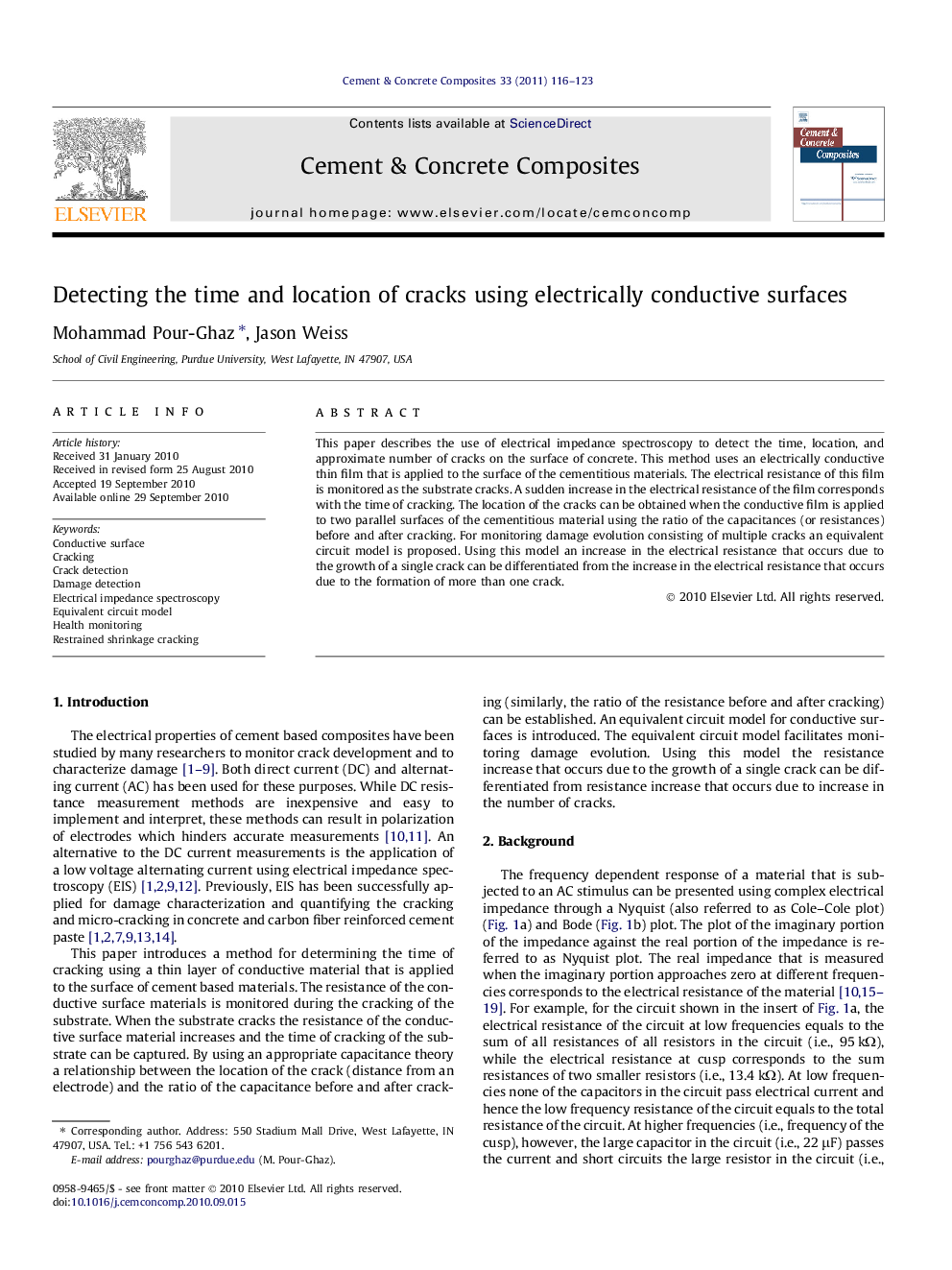| Article ID | Journal | Published Year | Pages | File Type |
|---|---|---|---|---|
| 1454959 | Cement and Concrete Composites | 2011 | 8 Pages |
This paper describes the use of electrical impedance spectroscopy to detect the time, location, and approximate number of cracks on the surface of concrete. This method uses an electrically conductive thin film that is applied to the surface of the cementitious materials. The electrical resistance of this film is monitored as the substrate cracks. A sudden increase in the electrical resistance of the film corresponds with the time of cracking. The location of the cracks can be obtained when the conductive film is applied to two parallel surfaces of the cementitious material using the ratio of the capacitances (or resistances) before and after cracking. For monitoring damage evolution consisting of multiple cracks an equivalent circuit model is proposed. Using this model an increase in the electrical resistance that occurs due to the growth of a single crack can be differentiated from the increase in the electrical resistance that occurs due to the formation of more than one crack.
